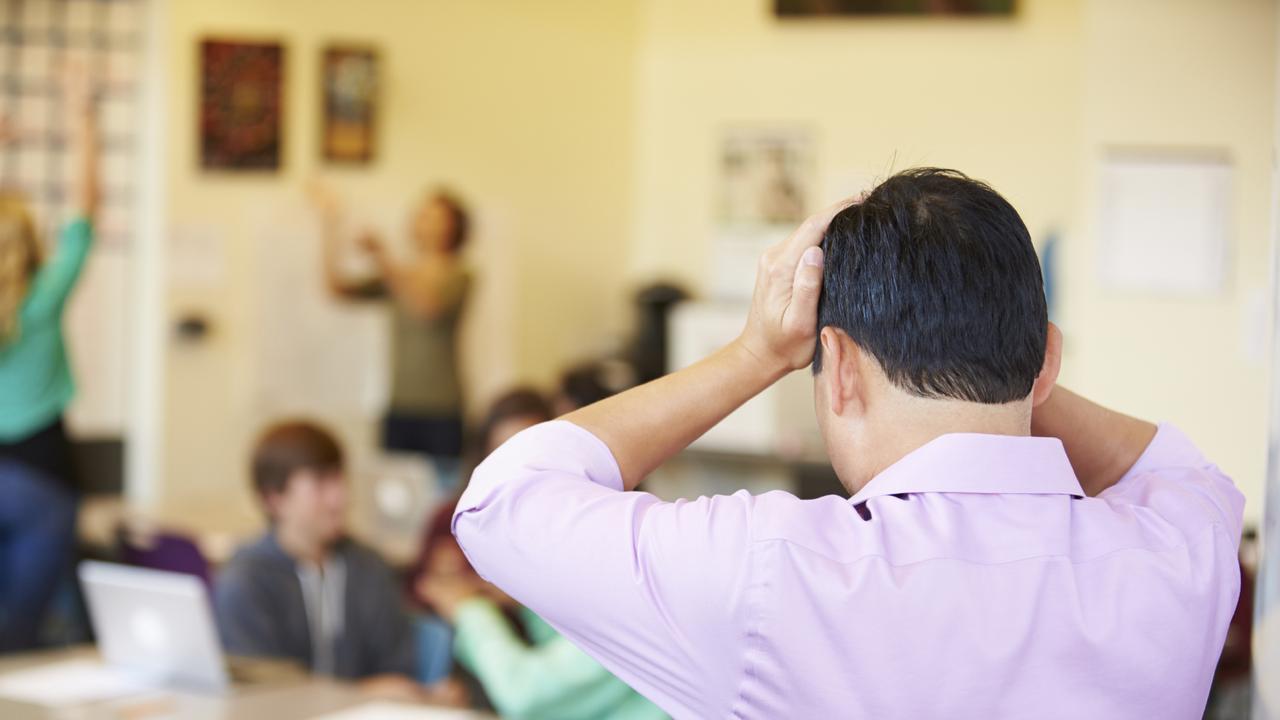Full list: How every school in NSW rates for class size
How much one-on-one time your child gets with a teacher can vary wildly at different public schools in the same postcode or even suburb. See how your school compares.
How much one-on-one time your child gets with a teacher can vary wildly at different public schools in the same postcode or even suburb, according to new data.
Student and staff numbers for every single school in the state released by the Australian Curriculum and Reporting Authority reveals that schools like Paddington Public have a relatively good ratio of 15.9 kids to every teacher but that blows out just 750m away where the ratio is 19.4 kids per teacher at Glenmore Rd Public.
It is a similar story in Sydney’s west where Revesby Public school has 14.3 students per teacher while Revesby South has 18.7 kids.
Teachers at Malabar have to look after 4 more kids on average than nearby Matraville Soldiers Settlement Public; Peakhurst South teachers have to look after 6.5 more students than their colleagues at Lugarno Public, despite being in the same suburb.
At Warwick Farm Public the ratio is 9:1, but in the same 2170 postcode at Newbridge Heights Public School there at 19.5 children for every teacher.
An Education Department spokesman said the same staffing formula was used across every single school but there was extra cash for students with additional needs which changed how many teachers a school got.
“In addition to core funding, schools receive targeted, needs-based funding through the Resource Allocation Model (RAM) that supports students with additional needs,” he said.

“RAM funding can be used to employ additional staff, which helps explain the differences in ratios between schools.”
But the NSW Teacher Federation’s Henry Rajendra said it was not so simple because principals could not easily hire a permanent extra teacher with that cash and often got in teachers on temporary contracts because they couldn’t offer them ongoing employment with that money.
“You get a lot of hit and miss because temporary employment by definition means people come and go,” he said.
“They are leaving it to schools to sort out problems which should be directly supported by the Department of Education.”

He said some differences between schools in the same suburb could also be driven by the fact that some schools were a drawcard because they had long established support classes for kids with disabilities. They then attract a higher rate of funding which means more teachers can be hired, further changing the ratio.
Across the board, NSW public schools have a worse ratio of 14.3 kids per teacher compared to 13.6 nationally. Catholic schools had an average ratio of 13.7 students per teacher in NSW last year while private schools had 11.6 kids per educator.
Centre for Independent Studies education researcher Glenn Fahey urged parents to look beyond the student to teacher ratio. He said despite smaller classes in schools since the 1960s, academic results nationally had plunged.
“What you have is more staff than ever in schools, at the same time that outcomes are in steep decline,” he said.
“Quality of teaching in a school matters more than the quantity of teachers. Top teachers prove to be effective even with more students under their care.”

Clare Basanovic from Miranda in Sydney’s south said student to teacher ratios were important but HSC and NAPLAN results were the biggest factors when choosing a school for her children Matthew, 15, Jessica, 13 and Emily, 10.
“We are out-of-area for both our schools … We spoke to teachers, we spoke to staff,” she said.
“Student to teacher ratios are important because obviously the lower it is, the more the teacher can focus on the students more in class, it is more individualised.”
She said the quality of the teachers was the most important thing when it came to learning.
“Purely it was picked on academics including NAPLAN, HSC results from the school and what the school had to offer each child.”
More Coverage
Originally published as Full list: How every school in NSW rates for class size




